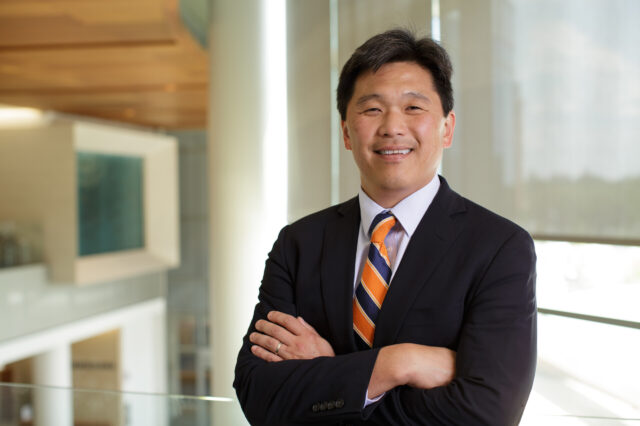The University of Florida radiosurgery team currently includes neurosurgeons Dr. William Friedman, Dr. Kelly Foote, radiation physicist Dr. Frank Bova and radiation oncologists Dr. William Mendenhall and Dr. Robert Amdur. The team also includes a biomedical engineer, computer programmer (Russell Moore) and a dedicated patient secretary (Fran Anderson), as well as doctoral students, residents and medical students performing research projects.
In 1985, the University of Florida team implemented radiosurgical capability at UF Health Shands Hospital. After reviewing the technology available for radiosurgery planning and radiosurgery treatment, the University of Florida team began developing a new approach to radiosurgery using the linear accelerator as the source of radiation. A new mechanical system to improve accurate delivery of radiosurgery treatment was created, as well as the first true dedicated computer dosimetry program dedicated to radiosurgery optimization.
The University of Florida subsequently patented this new approach to radiosurgery planning and radiosurgery delivery, which has become one of the most popular commercial radiosurgery systems worldwide, known as the Linac Scalpel™. This system is now marketed by Varian Systems.
University of Florida Radiosurgery Patient Tracking
The University of Florida Radiosurgery team has developed a customized computer database that enables them to carefully track each of the more than 5,000 patients treated clinically with radiosurgery at UF Health Shands Hospital.
A full-time database coordinator ensures that appropriate follow-up information is available on each radiosurgery patient. This database has facilitated the continuous improvement of radiosurgical treatment at the University of Florida and has served as the substrate for more than 100 published articles, chapters and books on stereotactic radiosurgery.
University of Florida Continuous Improvement in the Radiosurgery Process
Recent research projects include the following:
- Implementation of a micromultileaf collimator device for producing non-circular beam shapes in stereotactic radiotherapy
- Development of new tools for automatic multiple isocenter radiosurgery
- Development of a standardized "index" for judging the quality of radiosurgery plans
- Development of systems for using radiosurgical technology to treat extracranial tumors (i.e., spine, liver, prostate)
- Development of a highly conformal intensity-modulated radiosurgery
Radiosurgery Patient Selection
Candidates for radiosurgery include patients with arteriovenous malformations, acoustic schwannomas, meningiomas, pituitary tumors, metastatic tumors, gliomas and other brain lesions. This one-time outpatient radiosurgery treatment is often an excellent alternative to complex surgical procedures requiring lengthy hospitalization.

